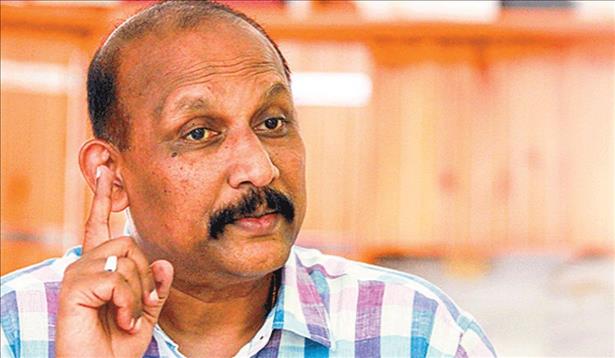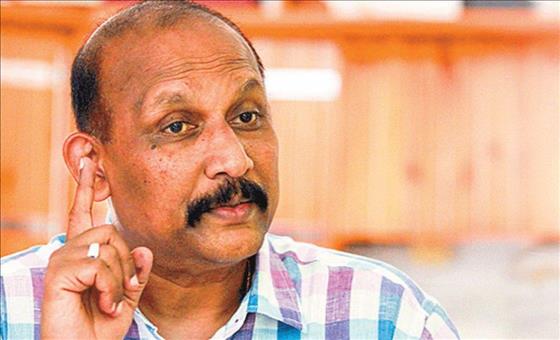
Sri Lanka- Can digging deeper divide the Tamil-speaking people even more?
(MENAFN- Colombo Gazette) 
By N Sathiya Moorthy
It is anybody''s guess how and why President Gotabaya Rajapaksa thought it urgent for him to set up a task force, that too under the ever-busy Defence Secretary, Kamal Gunaratne, to protect archaeological sites in the Eastern Province? After the cosmopolitan capital of Colombo, and by extension the Western Province, the East is representative of the multi-ethnic Sri Lankan national character – and also a microcosm of the same in multiple ways. Hence also the question, why and why now.
If the impression is that archaeological sites in the rest of the country do not require as much care as those in the East, that is not the truth. The inevitable conclusion, as is being drawn by Tamil and Muslim political and societal leaders, is that it is a one-sided affair, to protect the ''Buddhist identity'' of the nation''s majority community, and establish/re-establish that the East was a part thereof, and not a multi-ethnic Province, as it is at present.
For long, Tamil political leaders have maintained that the East used to be a Tamil-majority area, and the tilt began when Sinhala-Buddhists from elsewhere in the country were re-located there, when new irrigation projects commenced operations in the pre-Independence era. The counter-argument was/is that the Sinhalese had to be housed there because the local Tamils and Muslims did not take to farming as much as was possible, despite ready-irrigation facilities.
It was thus an irony that the conclusive ''Eelam War IV'' should commence with the LTTE''s blockade of Maavilaru waters for irrigation downstream, but withdrew when the armed forces moved in. It was unlike the LTTE''s style of preparations that the unnecessary start-off and unexplained withdrawal remain a mystery to date.
Likewise, the LTTE''s alleged attempts to pass on the blame on to the armed forces for the targeted killing of Muslims in the early months of the war in the East, rather even before it had picked up momentum, also exposed their motives and methods. That came long after the Kathankudy massacre in the East, and the forced exit of all Muslims from the North, way back in 1990.
More than three ways
There is a reason for reading back contemporary national political history by a decade or two-plus. On the face of it, by digging deeper, in archaeological terms, critics say that the Government is seeking to re-work ancient history to declare Eastern Province as a Buddhist exclusive region in the country, as with what is euphemistically called the ''Sinhala South''. As they point out, the presidential task force comprises only officials, archaeologists and clergy, all Sinhala-Buddhist, with no representation for other ethnicities.
Therein lies an additional catch that the Tamil-speaking political leadership seems shy of talking about – at least as of now. The Tamil-speaking community in the country (read: North and East) used to comprise both what is commonly understood as ''Sri Lankan Tamils'' and Tamil-speaking Muslims''. Post-Independence, no thanks to mutually-suspicions, they parted ways and the Sri Lanka Muslim Congress (SLMC) was born.
That they SLMC has since split into multiple factions is another story altogether. But the fact is that on all issues ethnic, the SLT and Muslims are not together. That includes electoral politics, especially in the East, and a political solution to the ''national problem''.
No serious attempt has also been made, especially by the SLT polity like the TNA to assuage the hurt feelings and sentiments of the nation''s Tamil-speaking Muslim community. Even a decade after the LTTE''s exit, no TNA leader or that of the Northern SLT community, urging the Province''s Muslim community, forcibly thrown out by the LTTE, to return home. Nor have they appealed to the Government to facilitate the same.
Worse still, after last year''s Easter Sunday serial-blasts, which also targeted a church in eastern Batticaloa, the inter-ethnic chasm between the two has only widened. Even while under the same UNP tutelage under the predecessor Government, especially after the split between President Maithripala Sirisena and Prime Minister Ranil Wickremesinghe, did the two ethnic polities pay even a lip-service to mutual appreciation in select ways and acknowledge mutual dependence, if any.
Self-preservation
Critics have sought to package the current, simmering reservations about archaeological site protection, as one based on language. Far from that. It is not even based on ethnicity, where the Sinhalas may be ranged against the Tamil-speaking people of all three hues – SLT, Muslims and Upcountry Tamils. It is sad that the other two have little time or respect for the Upcountry Tamils, even at this late stage in their collective but near-identical struggle for self-preservation.
Instead, this one is about religion – Buddhism, Hinduism and Islam. In historical terms, Hinduism and Buddhism are the two ancient religions in the country, or even across South Asia. Islam came to South Asia, especially South India and Sri Lanka and through trade, long before it came to the pre-Partition India from the North, through sword and gun-powder.
However, Christianity is a relative late entrant to Sri Lanka, unlike in the south Indian State of Kerala, where the Syrian Catholic church reportedly set foot not long after the founding of the religion. This may become a new problem area if the SLT, which is a combo of Hindu and Christian leaders and laity, if the former is going to press their demands on the archaeological site issue, on their own.
Comparable antiquity
There can be no question about the antiquity of Hinduism and Buddhism, the latter also a religion with a founder and date. The Mahavansa and other Buddhist literature, both in the country, and in neighbouring India, where it all began, also assert, without challenge and dispute, how Buddhism came to Sri Lanka. The story of King Vijaya, again from India, landing in Sri Lanka, and the arrival of Buddhism in the country, have intertwined to create a ''Sinhala-Buddhist'' identity, over centuries.
More importantly, as acknowledged by Tamil Hindu social and political leaders since the current controversy erupted, there used to be a time when there were Tamil-speaking Buddhists, too, in the country. The history of southern Tamil Nadu, across the Palk Strait, indicates that ''Hindu revivalism'' put paid to the long tenure of Jainism and Buddhism in those parts.
There are still Tamil-speaking Jains, whose current crop in southern Tamil Nadu, mostly have north-western Indian language of Marwari (that is also the name of the community) as their mother-tongue. Likewise, there are also Tamil-speaking Buddhists in Tamil Nadu, though fewer in number.
It is also said that at the height of Hindu revivalism in south India, which is dated to 7-12th century CE, innumerable Buddhist monks and laity crossed over to Sri Lanka – especially from Kerala to the present-day Eastern Province. Kerala''s Malayalam evolved only over the past few centuries.
Hence, the migrant Buddhists from India too were all Tamil-speaking, and should have p8icked up Sinhala much later. There also used to be ''Tamil Buddhists'' even at the turn of Independence and later, too.
All of it means that any archaeological excavation and/or preservation in the East, especially, could end up finding Tamil inscriptions in sites now marked as Buddhists and Sinhala inscriptions in what may be a Hindu temple at present. There could also be sites, including ancient Buddhist temples and Hindu kovils in the Province, where inscriptions in both languages could be found.
Some of the Tamil inscriptions may well be in praise of Lord Siva, the presiding deity of Sri Lanka''s Tamil Saiivites. Some even argue that it is a religion separate from mainline Hinduism, as is known at present.
(The writer is Distinguished Fellow and Head-Chennai Initiative, Observer Research Foundation, the multi-disciplinary Indian public-policy think-tank, headquartered in New Delhi. email: [email protected] )

Legal Disclaimer:
MENAFN provides the
information “as is” without warranty of any kind. We do not accept
any responsibility or liability for the accuracy, content, images,
videos, licenses, completeness, legality, or reliability of the information
contained in this article. If you have any complaints or copyright
issues related to this article, kindly contact the provider above.


















Comments
No comment